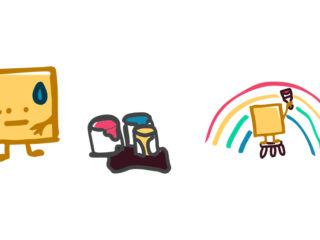Inspiration to take from the popular Netflix show Tidying Up for your LX design
A phenomenon was recently started by the Netflix home improvement program Tidying Up. Second-hand shops around the US are feeling the change in behavior as people thank their things and say goodbye to clutter. I’m one of these recent converts. Since binge watching Marie Kondo’s new show over the holidays, I’ve systematically organized my closets and kitchen and it feels amazing! What dawned on me after I evaluated my progress was how profoundly effective the show was in changing my behavior. I had always known I wanted to tidy up those neglected spaces but always lacked the motivation and follow-through.
So, what about this show makes it so effective at inspiring action and change in behavior? And how can we take a tip from it as Learning Experience designers to build content that sparks learning, action, and follow-through?
Let’s look at the big takeaways:
The premise – the show is about mindfully simplifying and organizing your living space.
The challenge – closets and cabinets are often “out of site out of mind” and take extra effort to keep tidy. It’s also hard to let go of things you once invested in. Also, even after you tidy you must maintain it and establish the habit of keeping it that way. Lifestyle changes are hard!
How it works…
Simple concept – Marie starts the process by asking you to touch each item you own and ask yourself “does it Spark Joy”? These two words stay with you and are attached to a feeling that you hone in on over time. Its amazingly effective. Everywhere I go, from my home, to shopping, to my work, I ask myself if it Sparks Joy. If it doesn’t I thank it and let it go.
In our design we should aim to do the same. Find a simple and relatable term that is tied to emotion or experience, so the learner can evoke it again and again as they apply the skill.
Relatable people – Another big part of this show’s success is their casting choices. The couples Marie visited were all very diverse, from newlyweds to empty nesters, and they were all relatable and authentic. Each couple had unique challenges which they confronted and overcame. They gave me the courage to say if they can do it, I can do it too.
In LX design we often try to accomplish this connection using scenario, but with this we can fall short. Scenarios, because of their story-like nature, are easier to dismiss as fictional even if they are based on true stories and personas. I’d like to see more documentary style storytelling in learning. Capturing real people with real challenges. It might not be pretty, but it creates a strong bond through authenticity and empathy.
Structured & self-paced – The participants commit to a pretty intensive 30 days of marathon tidying. Each week Marie has them work on their home in stages based on category.
For the learner at home it’s less realistic to commit to a one-month extreme makeover. But because its broken down by category the process can be self-paced. You progress at your pace, one category at a time.
Reinforcing explainers – The episodes feature a few explainer segments with Marie demonstrating the tips and techniques she just shared with the featured couple.
These segments provide reinforcement of the skill and something to quickly access and revisit again as needed. I especially liked the simple screen overlays with steps that animate in as Kondo speaks.
Open mindset – At the beginning of each episode Marie takes a silent moment to greet the house. That’s the first indication that this isn’t your average home improvement show. This is something different. She then has the couples touch each and every item, looking inward at how the item makes them feel and if they see that item in their ideal future. It’s very akin to mindfulness. At first it felt a bit awkward and silly, but once I got past that and practiced, it worked. Being mindful of how each thing made me feel, and thanking the things I no longer needed, allowed me to see things from a different angle and gain new perspective.
LX design could use this approach too. By introducing the learner to something completely unexpected upfront, you can grab their attention and signal that they are about to experience something that will require consideration and an open mind. Following up with repetition of that same mindset will make it stick and help the learner fully invest in what they’ve learned, make a change, and establish it as habit.
So to recap, take a tip from Tidying Up and make your design simple and relatable. Use structured, self-paced content and reinforce it with demonstration and repetition. Finally ask for an open mind from your learners upfront by pulling them in with something completely unexpected. Does your LX “Spark Joy”?



Leave a Reply